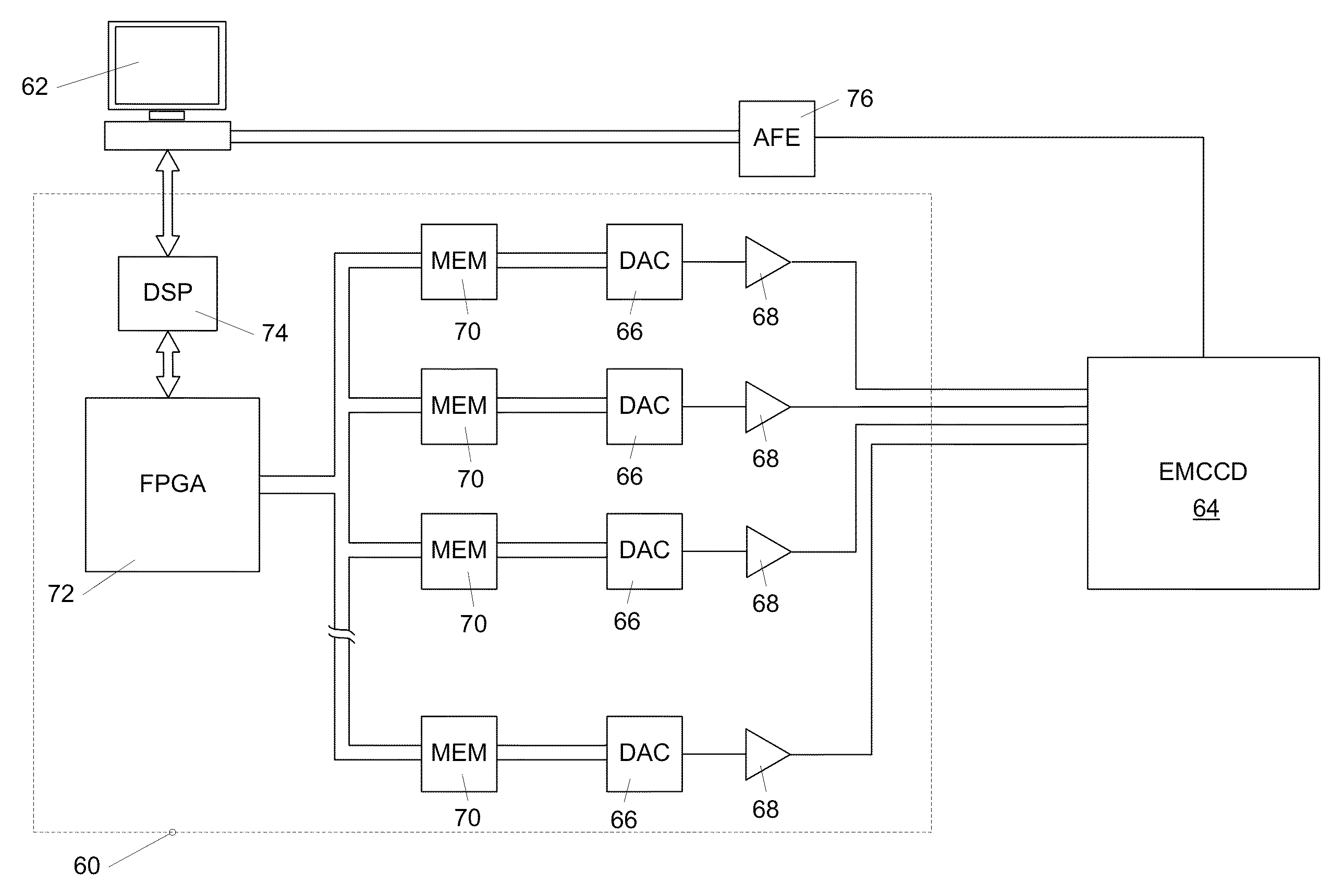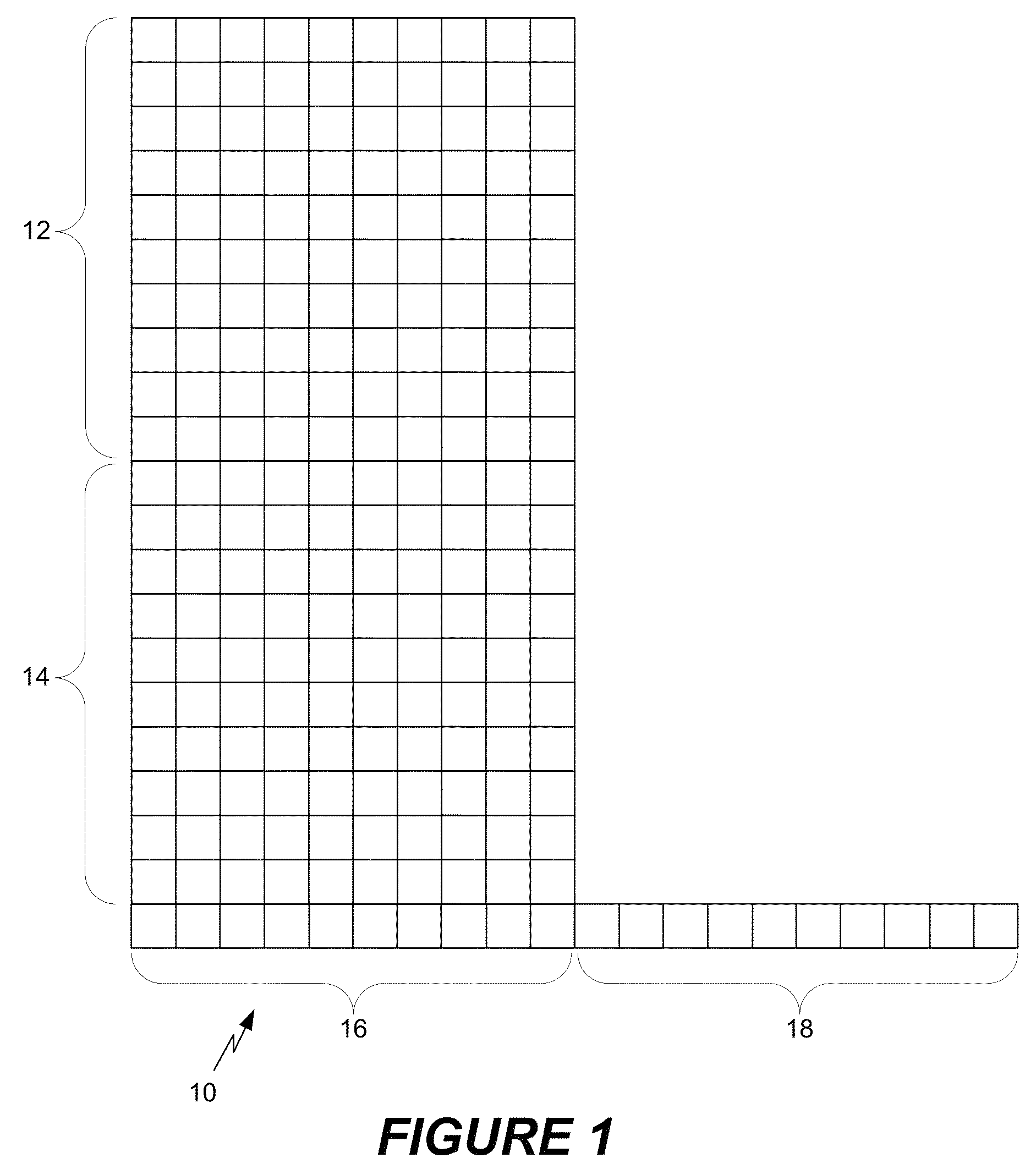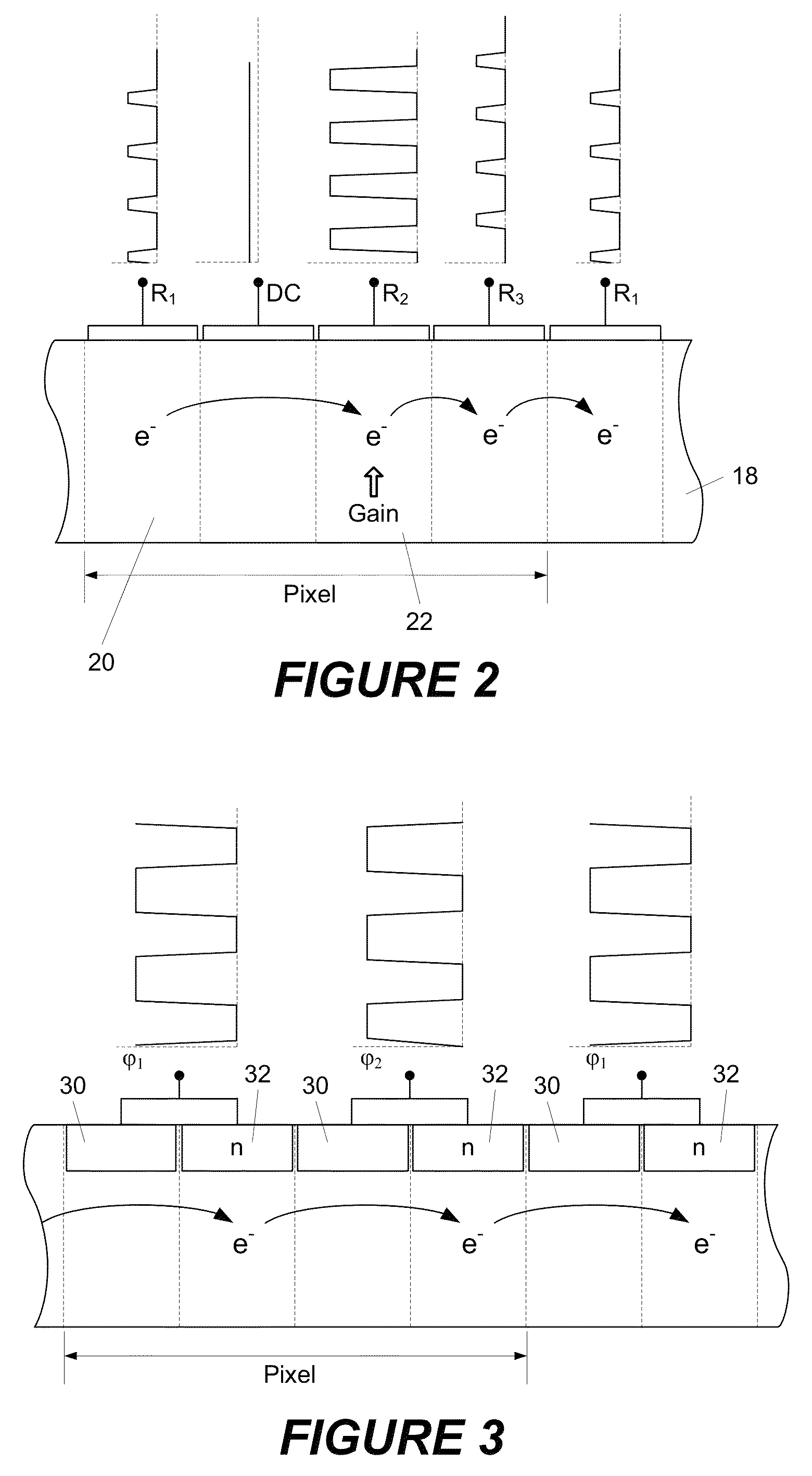Apparatus and method for low noise imaging
a low-noise imaging and apparatus technology, applied in the field of apparatus and methods for low-noise imaging, can solve the problems of limiting the extreme low-light sensing capabilities of the device, ccds that are limited in low-light situations, and still suffer from various noise problems, so as to achieve a high degree of flexibility in driving the image sensor and reduce the slope of the effective potential
- Summary
- Abstract
- Description
- Claims
- Application Information
AI Technical Summary
Benefits of technology
Problems solved by technology
Method used
Image
Examples
Embodiment Construction
[0019]Shown in FIG. 1 is a schematic depiction of an EMCCD module 10 having two general regions, an image capture region 12 and a storage region 14. The module 10 is depicted as a grid of regions indicative of “pixels” or discrete image capture locations, although those skilled in the art will understand that the appearance of the module itself and the shape of the pixels will differ, and that the actual number of pixels used will be much higher. In addition, this is just one example of an imaging module, and other types exist that have different configurations but nonetheless function with the present invention, such as an EMCCD module having a capture region with no separate storage region. As is known in the art, the EMCCD module 10 may be used to capture an image in the region 12, each of the pixel locations accumulating photoelectrons, the total number of which is indicative of the amount of light received at that location. The image is captured during a predetermined exposure ...
PUM
 Login to View More
Login to View More Abstract
Description
Claims
Application Information
 Login to View More
Login to View More - R&D
- Intellectual Property
- Life Sciences
- Materials
- Tech Scout
- Unparalleled Data Quality
- Higher Quality Content
- 60% Fewer Hallucinations
Browse by: Latest US Patents, China's latest patents, Technical Efficacy Thesaurus, Application Domain, Technology Topic, Popular Technical Reports.
© 2025 PatSnap. All rights reserved.Legal|Privacy policy|Modern Slavery Act Transparency Statement|Sitemap|About US| Contact US: help@patsnap.com



